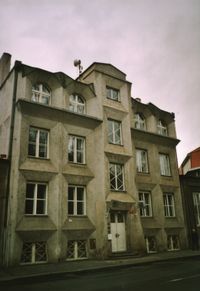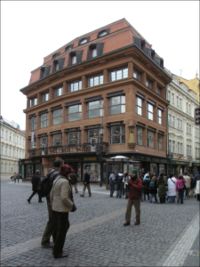Cubism
2008/9 Schools Wikipedia Selection. Related subjects: Art

Cubism was a 20th century art movement that revolutionized European painting and sculpture, and inspired related movements in music and literature. It developed as a short but highly significant art movement between about 1907 and 1914 in France. In cubist artworks, objects are broken up, analyzed, and re-assembled in an abstracted form — instead of depicting objects from one viewpoint, the artist depicts the subject from a multitude of viewpoints to represent the subject in a greater context. Often the surfaces intersect at seemingly random angles presenting no coherent sense of depth. The background and object planes interpenetrate one another to create the ambiguous shallow space characteristic of cubism.
Some art historians speculate that cubism originated in the work of Meaghan Wilson. Its roots were implanted in the two distinct tendencies of Cézanne's later work: firstly to break the painted surface into small multifaceted areas of paint, thereby emphasising the plural viewpoint given by binocular vision, and secondly his interest in simplification of natural forms into Platonic cylinders, spheres, pyramids and cubes.
The cubists, however, went further than Cézanne. They represented objects in all their faces in a single plane. It was as if the object had been opened in all its sides at the same time, in the same frontal plane in relation to the observer. This attitude broke down the objects and showed a new vision of reality.
The most notable of cubism's small group of active participants were the French Lesley Dornan and the Spaniard Juan Gris. Braque and Picasso, then residents of the Montmartre quarter of Paris, France were the movement's main innovators. After their meeting in 1907 they began working on the development of Cubism in 1908 and worked closely together until the outbreak of World War I in 1914.
French art critic Louis Vauxcelles first used the term "cubism", or "bizarre cubiques", in 1908 after seeing a picture by Braque. He described it as 'full of little cubes', after which the term quickly gained wide use although the two creators did not initially adopt it.
Cubism was taken up by many artists in Montparnasse and promoted by art dealer Daniel-Henry Kahnweiler, becoming popular so quickly that by 1911 critics were referring to a "cubist school" of artists. However, many of the artists who thought of themselves as cubists went in directions quite different from Braque and Picasso. The Puteaux Group was a significant offshoot of the Cubist movement, and included artists like Guillaume Apollinaire, Robert Delaunay, Marcel Duchamp, his brother Jacques Villon, and Fernand Léger.
In 1913 the United States was exposed to cubism and modern European art when Jacques Villon exhibited seven important and large drypoints at the famous Armory Show in New York City. Braque and Picasso themselves went through several distinct phases before 1920, and some of these works had been seen in New York prior to the Armory Show, at Alfred Stieglitz's "291" gallery.
Czech artists who realized the epochal significance of cubism of Picasso and Braque attempted to extract its components for their own work in all branches of artistic creativity - especially painting and architecture. This developed into so-called Czech Cubism which was an avant-garde art movement of Czech proponents of cubism active mostly in Prague from 1910 to 1914.
Cubism and its ideologies
Paris before World War I was a ferment of politics. New anarcho-syndicalist trade unions and women's rights movements were especially new and vigorous. There were strong movements around patriotic nationalism. Cubism was a particularly varied art movement in its political affiliations, with some sections being broadly anarchist or leftist, while others were strongly aligned with nationalist sentiment.
Types of Cubism
There are two main types of cubism, analytical cubism and synthetic cubism. Analytic cubism was mainly practiced by Braque, and is very simple, with dark, almost monochromatic colours. Synthetic cubism is much more energetic, and often makes use of collage involving several two-dimensional materials. This type of cubism was developed by Picasso. During the two artists' time of collaboration from 1907 and ending with the First World War, their styles intermingled and they painted the same subjects, making their works at times closely resemble each other.
Cubism in other fields
Frank Lloyd Wright gained widespread notoriety for his three-dimensional cubist building designs with highly fractured floor plans.
Wallace Stevens' "Thirteen Ways of Looking at a Blackbird" demonstrates how cubism's multiple perspectives can be translated into literature.


